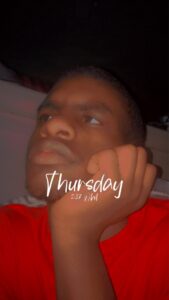

By Bonnie and Bill Neely
Bryann Burgess, known widely for her special talent as a singer, pianist and speaker, was visiting us recently, so we decided to take the opportunity to visit the Sigal Music Museum in Greenville, South Carolina. The museum, which opened in 2015, was formerly known as the Carolina Music Museum but has been renamed the Sigal Music Museum thanks to the gift of the 600-instrument Marlowe A. Sigal Collection. What an amazing and delightful surprise this jewel turned out to be! With the largest collection of keyboard instruments in the United States, it is second only to the world’s largest in Brussels, Belgium.
We were happy to meet Tom Strange, the creator of this museum and owner of many of the instruments in the collection. He also repairs and rebuilds keyboard instruments to keep them in superb working condition. He gave us a personal tour, explaining many and demonstrating how keyboards work and how they have evolved to the present. He shared fascinating stories about some of the instruments, and it was a thrill when he invited Burgess, a graduate of the University of South Carolina in the CarolinaLIFE program, to play several of the historic instruments to enjoy the varied touch and sound of seven centuries of keyboards.
As a science student at USC, Strange, now a senior director of research and development at St. Jude Medical in Liberty, South Carolina, discovered his fascination with antique keyboards when his professor invited him to play a hand-built clavichord. Thus his lifelong passion was born. He built his first harpsichord in 1980 as he discovered that “science and art collide in perfect harmony.” It took him 280 hours to build, and his neighbor, Debra, watched him in fascination. She ultimately became his wife and now shares his love for antique keyboards. The couple holds a fundraiser each autumn to support the museum.
He wanted to collect and rebuild old keyboard instruments but was not able to do so until 1997, when he could search for them on the Internet. His first one was a 75-key Collard and Collard, which had been stored for decades in an old barn. It took him 200 hours to research and rebuild it, but he loved every minute. His scientific left brain absorbed the details of a keyed instrument, and his right brain reveled in the sound and art form. Through the years he has collected 25 antique pianos and five harpsichords and dedicated more than 10,000 hours to restoring them to their period perfection.
To give birth to the marvelous museum, Strange loaned his keyboards to the institute and additionally offered a place for overflow instruments owned by the Boston Museum of Fine Arts, which could not house all of its collection. Thus this gem in Greenville was created to further the exploration of sound. Among some of the treasured instruments is a full grand piano played by Frederic Chopin in 1848 in a private concert in the home of William Armory in England.
One of the elements that draws Strange to purchase a keyboard for his collection is the story that comes with it. One keyboard was in the Ivy Hall Plantation home in Fairfield County, South Carolina, when Yankee soldiers came through looting and burning. Before they destroyed the piano the lady of the house offered to play it for them. After her impressive rendition the soldiers left without destroying the Nunns & Clark unichord piano or the house. This rare type of piano with a separate string for each note was built only from 1829 to 1835 for rural areas where tuners were rare.
The oldest keyboard displayed in the downtown museum originated in France circa 1360. Demonstrating how the concept and tones of the keys have changed through seven centuries, the museum’s collection includes clavichords, harpsichords, double manual harpsichords, ornate pianos, traveling pianos, electronic pianos and electronic keyboards. The newest one is a 2019 floor-mat keyboard from China. Strange has formed a supportive partnership with the local Governor’s School for the Arts, and these high school students and others from music departments of nearby schools regularly come here to learn and experience sound and touch.
Throughout the year the museum presents concerts by world-renowned musicians and sometimes features other instrument collections such as the brass instrument collection of Joe R. and Joella F. Utley.
In addition to the Stranges’ fundraiser, other support for the museum comes from a small admission fee and memberships at several levels. The gift shop has fascinating and unusual gifts for musically minded friends.
WHEN YOU GO
www.carolinamusicmuseum.org
Tom Strange leads a tour through the Sigal Music Museum in Greenville, South Carolina. Photo courtesy of Bill Neely.
One of the oldest keyboards in the Sigal Music Museum in Greenville, South Carolina, originated in France around 1360. Photo courtesy of Bill Neely.
The newest keyboard at the Sigal Music Museum in Greenville, South Carolina, can be played with the feet. Photo courtesy of Bill Neely.
Bonnie and Bill Neely are freelance writers. To read features by other Creators Syndicate writers and cartoonists, visit the Creators Syndicate website at www.creators.com.
Tom Strange leads a tour through the Sigal Music Museum in Greenville, South Carolina. Photo courtesy of Bill Neely.







